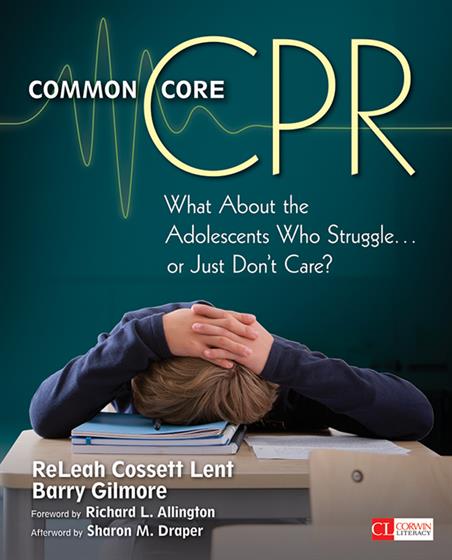Foreword by Richard L. Allington
Introduction: Meeting Common Core With Common Sense
Defining "Standards"
An Introduction to the Standards
Important Considerations
Using Common Sense: What Is Not Covered by the Standards
A Portrait of a Young Student: What We Cover in This Book
Keeping the End in Mind
Acknowledgments
Chapter 1. How Do We Reach Reluctant Students?
Understanding Reluctance: Why Daniel Struggled
Final Thoughts: Leaving Daniel (for Now)
Chapter 2. Why Scaffolding Complex Text Is Crucial
Creating Proficient Readers: What's a Teacher to Do?
Text Complexity: Difficult to Define
Scaffolding: Building the Bridge
Untangling Complex Text: A Commonsense Approach
Scaffolding in Action: Practices That Support Learning
Build Background Knowledge to Make Learning Stick
Final Thoughts
Chapter 3. How Do We Engage All Students in Reading and Writing?
Starting With Reading: The Importance of Audience and Purpose
Audience and Purpose in Writing
Final Thoughts
Chapter 4. How to Go Deeper: Creating Analytical Thinkers
A Case of Aliteracy: The Bubonic Plague
Deepening Understanding Through Critical Literacy
A Critical Look at Close Reading
Final Thoughts
Chapter 5. Why Evidence Matters: From Text to Talk to Argument
Paideia Seminars: A Focus on Evidence
Paideia Seminars and Struggling Students
Problem- and Project-Based Learning: Using Evidence
The Project Realized: Envisioning the Future Fair
The Advantages of Project-Based Learning
Final Thoughts
Chapter 6. How Using Diverse Media and Formats Can Ignite Student Learning
The Scope of Technology in an Inquiry-Based Classroom
Preparing for Reading and Writing: Interpreting Material in Diverse Formats
Speaking and Listening: Technology and Student Presentation
Final Thoughts
Chapter 7. Why a Culture of Reading Is Critical--and How to Create One
A Culture of Reading: How It Supports the CCSS
The Workshop Approach: Does It Meet the Standards?
Understanding Perspectives: A Piece of the Portrait
Literature Circles: Sharing Perspectives
Do Literature Circles Meet the Standards?
Creating a Culture of Literacy in a Middle School
Final Thoughts
Chapter 8. What Do We Do About the Language Standards?
What Do We Do About Grammar?
What Do We Do About Vocabulary?
Final Thoughts
Afterword by Sharon M. Draper
Appendix A. Standards for Motivation and Engagement With Teacher Tools
Appendix B. Books for . . . Lists
References
Index
About the Authors




